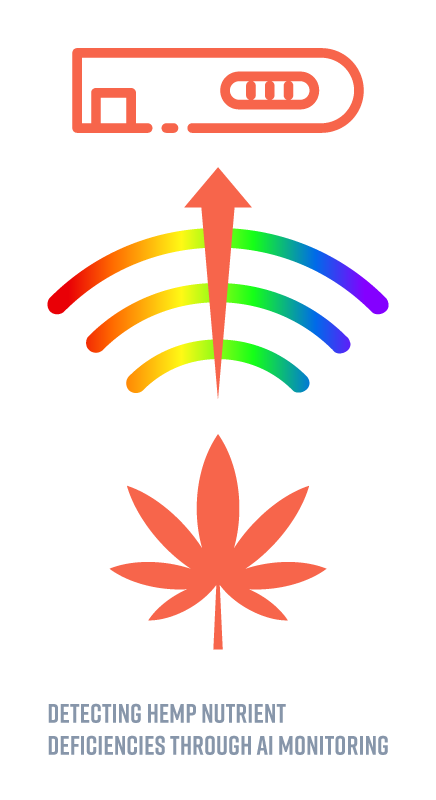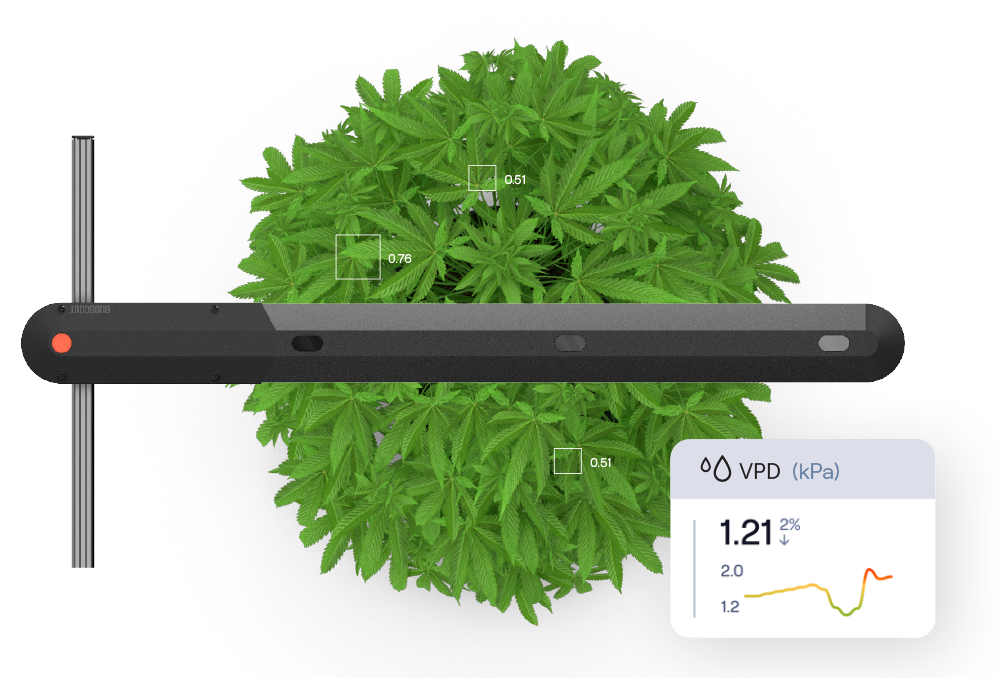Cannabis growers lose $5.7 Billion in annual sales from preventable errors when caring for their crop. In an industry where every plant lost means a hit to your bottom line, early detection is the key to a plentiful and profitable harvest. At Budscout, we not only value research, but we also champion and partner with others to initiate it.
As competition increases and profits erode, you know firsthand that growers are being pushed harder and harder to produce more, with less. If that were not enough, labor issues have made it difficult to find and keep good people in order to manage and optimize growing operations. In a world where everyone is striving for greater yield and potency with lower cost, current technology and tactics are becoming exhausted.
While consulting with growers throughout the country, our founders and scientists came up with an interesting idea. Could we use hyperspectral imaging with advanced Al systems to give growers insights and feedback about the health of every plant in their facility, at all times? To answer this question, we partnered with Professor Tom Michaels and his research team at the University of Minnesota Department of Horticulture Science and have summarized the results below. The full academic paper is available for download if you want to go deep into the science.
Through our partnership with the University of Minnesota, which has one of the best agriculture programs in the nation, we set out to use hyperspectral imaging in combination with artificial intelligence (AI) in order to improve growing outcomes by detecting the light and wavelengths associated with nutrient deficiencies, water deficiencies, and other early signs of stress in cannabis plants well before they can be detected by the human eye. What we were able to confirm as a result of this study was astounding!
“The main challenge in precision agriculture is detecting stress factors correctly before damage increases in the entire crop…Stress factors such as insects, nutrient deficiencies, pathogens, drought, and weed presence can decrease yield quality and quantity without proper management”

This study, titled Early Detection of Stress in Greenhouse-Grown Industrial Hemp Plants by Hyperspectral Imaging, was carried out by the University of Minnesota in partnership with the Budscout team. We took three hemp cultivars and breeding lines (Trilogene Alpha, Atlas Wilhelmina, UMN 5-4) and fertilized them to the point of maturity. Once they arrived at maturity, the plants were monitored using hyperspectral sensors. The hope was for the hyperspectral sensors to detect growth inhibitors at a very early stage, even before agronomists or growers could spot it with the human eye.
By identifying and detecting the unique wavelengths and bands of light emitted when the plants were experiencing various diseases or growth inhibitors, we were able to apply AI to monitor those levels constantly. Several AI models were utilized to analyze the collected data:
- Neural Network Multilayer Perceptron (MLP)
- Stepwise Discriminate Analysis (STDA)
- Random Forest Classifier (RFC)
- Quadratic Discriminant Analysis (QDA).
These methods of AI analysis were selected because of their high classification accuracy, which was proven in similar studies.

Hyperspectral sensors were used to collect the data from changes in wavelengths and bands of light. These sensors are often used on aircrafts, floating buoys, and anchored poles to capture high spectral resolution images. Hyperspectral sensors are extremely sensitive to spectral calibration with over 100 contiguous spectral channels. According to Science Direct, “These instruments are frequently used to characterize the surface terrain, materials and properties for such applications as mineral prospecting, environmental monitoring, precision agriculture, and military uses. In addition, they are sensitive to properties of the atmosphere such as aerosol optical depth and column water vapor.”
By using hyperspectral sensors and advanced data processing, this study proves that it is possible to detect hemp nutrient deficiencies, irrigation issues and disease well before they can be perceived by the human eye. Not only that, but advanced monitoring and AI can help us detect where fertilizer should be applied, which plants need water, and identify the plants with early signs of disease for removal. Having access to detailed, hourly feedback about the health of each individual plant allows growers to manage their crop and labor with an unprecedented level of precision
While hyperspectral imaging hardware is extremely accurate, it also radically increases the cost of raising your overall crop. Consider the amount of hyperspectral imaging hardware you would need to purchase to monitor all your crops across multiple warehouses. As a result of this research in partnership with the University of Minnesota, our team discovered that, because we have identified the wavelengths and bands of light associated with nutrient deficiencies, water deficiencies, and other stressors, we can utilize low-cost multispectral hardware in an autonomous robot along with advanced AI to detect these issues. This greatly reduces the cost of this technology to implement across your entire crop operation.
“Monitoring nitrogen, iron, magnesium, and phosphorous can help farmers manage their fields by applying the optimum application rate, avoiding excessive fertilization, and reducing water use, which is costly and causes environmental pollution.”
This technology provides a low-cost option to minimize the loss of crops, detect early signs of stress in plants, maximize your yield, and lead to healthier crops.
We were honored to work alongside Professor Tom Michaels and his research team at the University of Minnesota to utilize technology to advance the cannabis industry and lead to better growing outcomes.
It’s our passion to help growers improve through research and technology. This new monitoring technology, using multispectral hardware in a fully autonomous robot with advanced AI, will help detect issues in crops 7-10 days before someone who is expertly-trained. We know this technology will reduce the labor, time, and expense it previously took to monitor your crops to provide a healthy, happy, and robust cannabis yield.
Read the full study!
Discover how Budscout is utilizing these findings to make monitoring and detection easier in your growing environment. Get started today!




